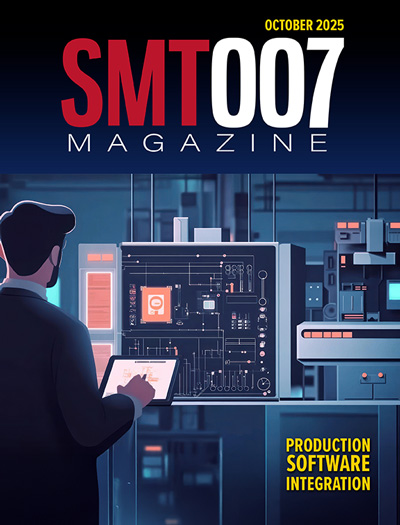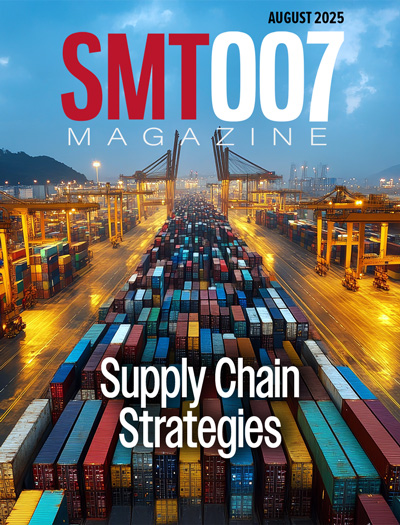-

- News
- Books
Featured Books
- smt007 Magazine
Latest Issues
Current Issue
Production Software Integration
EMS companies need advanced software systems to thrive and compete. But these systems require significant effort to integrate and deploy. What is the reality, and how can we make it easier for everyone?

Spotlight on India
We invite you on a virtual tour of India’s thriving ecosystem, guided by the Global Electronics Association’s India office staff, who share their insights into the region’s growth and opportunities.

Supply Chain Strategies
A successful brand is built on strong customer relationships—anchored by a well-orchestrated supply chain at its core. This month, we look at how managing your supply chain directly influences customer perception.
- Articles
- Columns
- Links
- Media kit
||| MENU - smt007 Magazine
Estimated reading time: 2 minutes
Process Validation Can Lead to Higher Performance Levels
Before we evaluate an effective approach to process validation, it is important to understand the quality system requirements of validation. In the ISO 9001:2015 standard—Clause 8.5.1—on control of production and service provision, there is a requirement for you to have controlled conditions for “validation and periodic revalidation of the ability to achieve planned results of the processes for production and service provision where the resulting output cannot be verified by subsequent monitoring or measurement.” In regulated industries, such as aerospace and medical devices, specific process validation requirements are called out in AS9100D—aerospace standard—Clause 8.5.1.2 “Validation and Control of Special Processes,” and ISO 13485:2016—medical devices, quality management systems—Clause 7.5.6 “Validation of Processes for Production and Service Provision.”
The FDA made process validation a regulatory requirement in CFR 820.75(a), process validation with supplemental guidance for industry—Process Validation: General Principles and Practices, Current Good Manufacturing Practices (CGMPs). These standards and regulations provide general guidance on the requirements but do not specify how process validation should be implemented. Each manufacturer is required to develop its own methodology best suited to its manufacturing environment. This is where manufacturers have the opportunity to implement a sustainable and effective process validation program that not only meets compliance to the standards but provides value to the manufacturer in ensuring that a process yields consistent and reliable product quality.
Continue reading this column to learn how to implement an effective process validation program in the May 2019 issue of SMT007 Magazine.
More Columns from Operational Excellence
Operational Excellence: Strengthen Your Design Transfer Process With Agile NPIOperational Excellence: Redefine Recruiting to Attract and Hire the Right Talent
Operational Excellence: Process Effectiveness Qualification
Operational Excellence: Working Remotely–Redesign Your Information Systems
Operational Excellence: Sharpening Your Organization’s Competencies
Operational Excellence: Hiring and Retaining Top Employees
Operational Excellence: Update Your Business Contingency Plan
Operational Excellence: The Gemba Transformation of Manufacturing With AI


